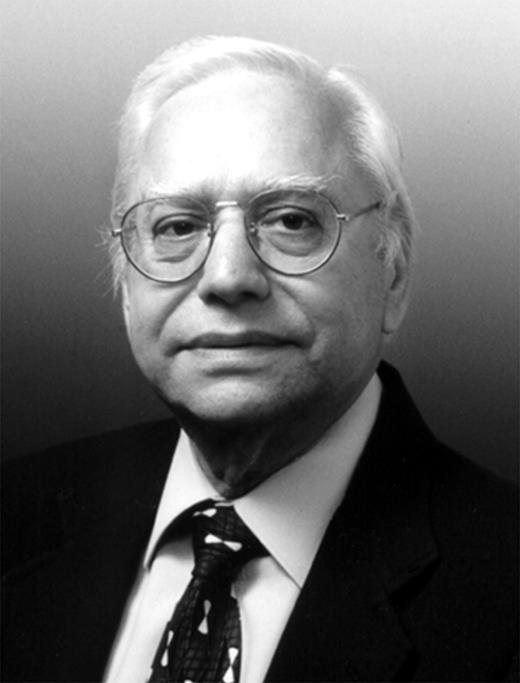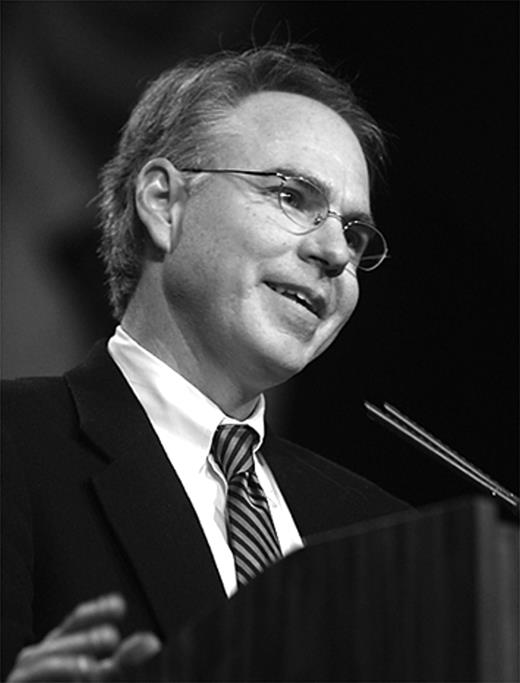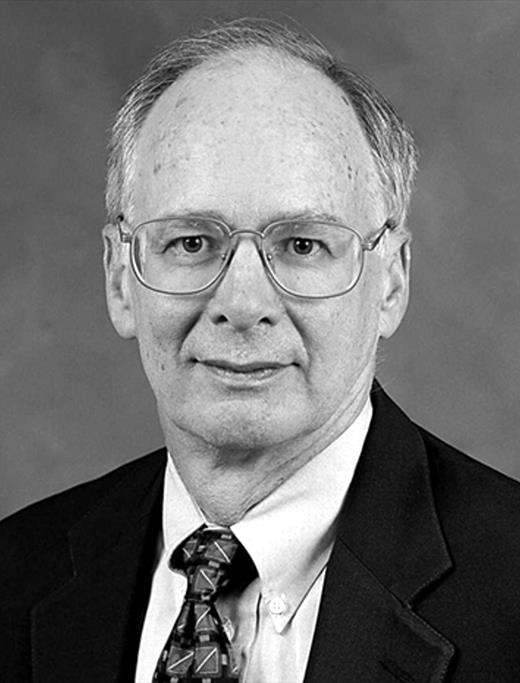- Split View
-
Views
-
Cite
Cite
Ken Garber, Rapamycin’s Resurrection: A New Way to Target the Cancer Cell Cycle, JNCI: Journal of the National Cancer Institute, Volume 93, Issue 20, 17 October 2001, Pages 1517–1519, https://doi.org/10.1093/jnci/93.20.1517
Close - Share Icon Share
CCI-779, a close analogue of rapamycin, has shown activity against a wide range of cancers in preclinical models and in phase I trials, and seven different phase II trials are under way. Some suggest that it may be one of the most promising drugs in the anticancer pipeline.
“I’m excited,” said Charles Sawyers, M.D., of the University of California at Los Angeles Jonsson Comprehensive Cancer Center. “It’s a safe drug, it’s very precise in its action, it’s definitely a targeted therapy.”
The cancer research community is only now becoming aware of CCI-779. But it is hardly new. The parent drug, rapamycin, was discovered 30 years ago, and its activity against cancer was revealed back in the mid-1970s. All of the research on rapamycin, the very first “cytostatic” agent, nearly fell by the wayside, but it was resurrected by a single determined individual.
Rapamycin is a natural compound produced by bacteria that were found in an Easter Island soil sample around 1970. (“Rapamycin” comes from Rapa Nui, the native name for Easter Island.) “We had the notion we were dealing with something novel,” recalled Suren Sehgal, Ph.D., then senior scientist at Ayerst Research Laboratories in Montreal, where rapamycin was isolated in 1972.
Ayerst began developing rapamycin as an antifungal drug, but soon realized it also suppressed the immune system. That killed it as an antifungal, but Sehgal sent a sample of the drug to the National Cancer Institute for testing. “They found absolutely fantastic activity of the drug against almost all solid tumors,” said Sehgal. In combination with chemotherapy, “the anticancer effect was absolutely astonishing.”
Rapamycin was quickly designated a priority drug by the NCI. “It was a totally new class of anticancer agents we were looking at—cytostatic,” said Sehgal. “To that point they were all cytotoxic agents.”
But disaster soon struck. As Ayerst researchers (and academic scientists) were struggling to develop an intravenous formulation for use in clinical trials, company management made a fateful decision. To consolidate research facilities, in 1982 it shut down the Montreal laboratories, laid off 95% of the workforce, and sent the remnants to Princeton, N.J. The rapamycin program was aborted. At the time, the notion of blocking signal transduction was completely novel and untested.
“For all practical purposes, rapamycin was a lost cause,” recalled Sehgal. “It was abandoned by Ayerst as a drug candidate.” NCI, without a source for the drug, was helpless to proceed. All work halted.
For 6 years, rapamycin was forgotten. But Sehgal never gave up hope. In 1987 American Home Products merged its two drug subsidiaries, Wyeth and Ayerst, and new management took over. In May 1988, Sehgal sent a memo about rapamycin and was allowed to send the drug out for animal testing. Outstanding results convinced Wyeth-Ayerst to resurrect the drug as an immunosuppressant. Sehgal contacted the NCI, and anticancer work resumed.
Rapamycin gradually regained momentum. Wyeth-Ayerst synthesized and tested hundreds of rapamycin analogues, both to stay ahead of competitors and to extend patent life. The best one was CCI-779. When it was run through the NCI’s standard 60-cell line screen, “we found that it was broadly active against a wide variety of tumor types,” said Jay Gibbons, Ph.D., assistant vice president for oncology research for Wyeth-Ayerst.
More importantly, it seemed to work by a completely novel mechanism. “It didn’t really look like any other drug in the cell line screen,” said Janet Dancey, M.D., a senior clinical investigator in the NCI’s investigational drug branch. “Its pattern of activity was unique.”
Researchers in academia and industry, in the meantime, were deciphering rapamycin’s effect on the cell. Working in yeast, Michael Hall, Ph.D., of the University of Basel in Switzerland, cloned rapamycin’s molecular target, dubbing it TOR (“target of rapamycin.”). “A beautiful series of experiments,” commented Sawyers. Others found its mammalian homologue, mTOR. Meanwhile, Jon Clardy, Ph.D., of Cornell University, Ithaca, N.Y., described how rapamycin inhibits mTOR and blocks its phosphorylation of downstream proteins that control translation of key cell-cycle mRNAs.
Then the last, crucial piece fell into place. In 1997, Ramon Parsons, M.D., Ph.D., of Columbia University cloned PTEN—a new tumor suppressor gene. PTEN, which is mutated (and presumably inactivated) in about half of brain cancers and endometrial cancers and in perhaps 20% of metastatic prostate cancers, regulates a critical cell signaling pathway involving a versatile protein called Akt.
In the last few years, Sawyers, Parsons, and others have placed mTOR downstream of Akt, suggesting mTOR’s central importance and providing a convincing rationale for the activity of CCI-779 against so many tumors. Finally, three groups showed last summer that mutations in PTEN make tumors especially vulnerable to CCI-779.
The PTEN link is a clear invitation to apply pharmacogenetics, the much-talked-about but seldom practiced tailoring of cancer therapy to patients’ individual tumor genetics. Though tamoxifen is given to estrogen receptor-positive breast cancer patients and Herceptin to those with breast tumors overexpressing the erbB2 receptor, no drug is yet linked to a gene that is mutated in many cancers.
“You want to at least test the hypothesis that cancers that are ‘PTEN null’ should be the ones that respond the best,” said Sawyers. “That’s the next step.” In most of the phase II trials, patients’ tumors will be analyzed for PTEN mutations. It is possible that phase III might include only these patients. “If we see a strong predictive pattern, we could design phase III to limit enrollment,” said Dancey. “It really depends on what the results are.”
Molecular profiling downstream is also crucial. In several trials, mTOR’s two chief targets are being checked for phosphorylation status—the hallmark of biological activity—in patients’ tumors. “If we just enroll 50 patients with whatever cancer, I would not be surprised if we see a response rate of maybe 10% or 20%,” said Sawyers, who argues for the widest possible molecular profiling to learn how to improve that percentage.
Sawyers is planning a CCI-779 prostate cancer trial monitoring Akt. “If your patient’s tumor has a high level of Akt phosphorylation, then that [patient is] the perfect candidate for this kind of treatment, if the model is right,” he said.
Although labor-intensive and expensive, this work is necessary to later select patients and dose, agreed Manuel Hidalgo, M.D., Ph.D., assistant professor at the University of Texas Health Science Center in San Antonio. “We need to be able to profile who is who in that mass of tumors,” he said.
In a phase I study of CCI-779, Hidalgo reported several cases of tumor regression. “It was a surprise to everybody,” he commented. “We were expecting cytostasis.”
But combination therapy seems to be the best use for CCI-779, as for other cytostatics. “It’s probably a little unrealistic to expect a drug with this mechanism of action to result in out-and-out cures or outright regression of tumors,” said Gibbons. The main side effect, immunosuppression, is mostly avoided through intermittent dosing.
Given the importance of the mTOR signaling pathway, why does CCI-779 have so few other side effects? Perhaps normal cells find alternate signaling pathways, while cancer cells rely on this one. “There must be some redundancy of signaling [in a normal cell] that allows it to tolerate no mTOR activity,” speculated Sawyers. But in cancer cells, “when you add the rapamycin, there’s no backup. And—Boom!—You get a therapeutic effect.”
CCI-779’s uniqueness is its biggest advantage. “To date, there has not been another drug that attacks this pathway,” said Gibbons. Now, after 30 years, that’s changing. “Novartis is trying to develop mTOR inhibitors,” said Sawyers. “Every major pharma and a lot of biotechs are going after Akt [and] PI3 kinase... Everyone thinks this pathway is important.”
Dr. Suren Sehgal
Dr. Charles Sawyers
Dr. Jay Gibbons





